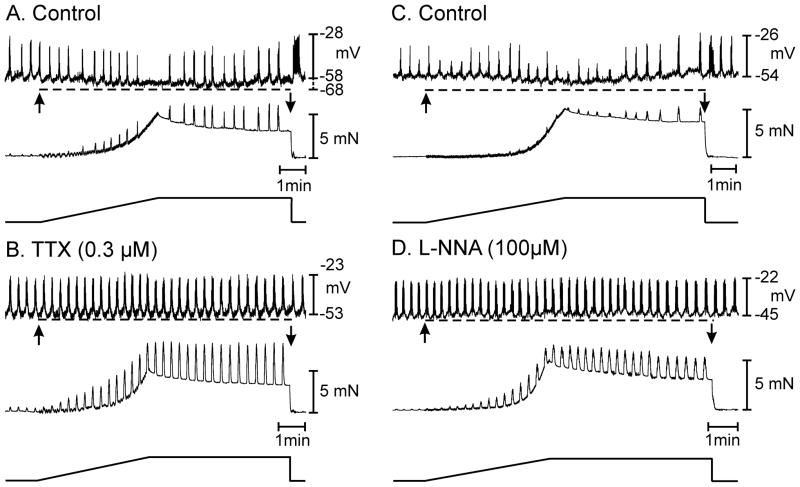Figure 3.
Neuronal mechanisms underlie stretch dependent responses in the proximal colon. (A) Shows typical membrane hyperpolarization (dashed line) and reduction in AP complexes associated with an increase in isometric tension in response to a 5 mN stretch of the circular muscle layer (arrows in A). (B) In the presence of tetrodotoxin (TTX; 0.3 μM) there was a depolarization in membrane potential and an increase in muscle excitability. Application of the stretch ramp in the presence of TTX did not cause membrane hyperpolarization or a decrease in the discharge of AP complexes (dashed line) or a reduction in phasic mechanical activity (B). (C & D) show the role of nitric oxide in stretch dependent membrane hyperpolarization and inhibition of AP complexes. (C) Membrane hyperpolarization, reduction in AP complex discharge and reduction in spontaneous mechanical activity to the stretch ramp under control conditions (C) was abolished by the addition of the nitric oxide synthase inhibitor L-NNA (D). L-NNA (100 μM) caused membrane depolarization from −54 to −45 mV and increased the spontaneous electrical and mechanical activities. During active change in muscle length when the tension ramp was applied there was no change in membrane potential or AP complex discharge (dashed line in D). L-NNA also decreased the compliance of the circular muscle. In the presence of atropine the tension ramp applied at 6 μm s−1 produced force at a rate of 0.015 mN s−1 and required 330 seconds to reach the maximal 5 mN force took 330 seconds to reach 5 mN of force however, after L-NNA this was reached in 246 seconds.

